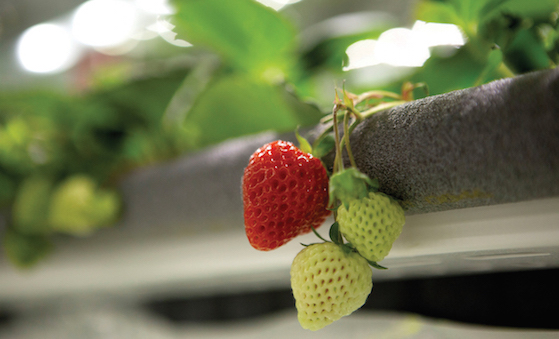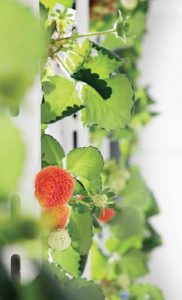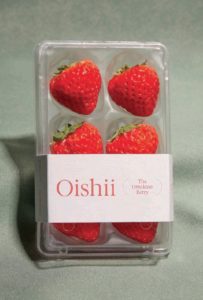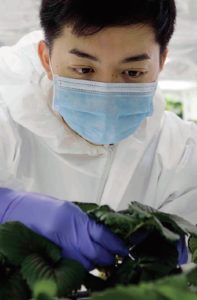

May 12, 2021Startup claims first vertically grown, commercially sold strawberries
An interesting strawberry grown vertically is making a quiet debut at New York City restaurants, direct-to-consumer online sales and even upscale retailer Eli’s Market.
The berries, which sell for about $5 each in a three- or six-pack are the product of research into strawberry varieties and indoor vertical hydroponic growing systems by Oishii, a north New Jersey startup. The variety of strawberry, Omakase, is a rare type from Japan, and Oishi claims to be the first to grow it in the U.S.
Getting vertical
While vertical growing systems for greens and herbs are becoming more commonplace, the use of the systems for strawberries is cutting-edge, with category giant Driscoll’s last year announcing a partnership with San Francisco, California, vertical grower, Plenty, for research and development.


Oishii was founded in 2016 by Brendan Somerville and Hiroki Koga, who met pursuing MBA degrees at Berkeley. Somerville had co-founded an avocado company in Uganda, while Koga had worked as a consultant in agriculture technology in Japan.
The two built a northern New Jersey research facility during 2017-2018 and soon after started some commercial sales to food service.
“We’re the first indoor grower that’s been able to have happy bees on our crops consistently,” Somerville said. “Through our years of R&D, we’ve created perfect pollination, which I think is the real revolution in our grow system.”
Their pollination results are nearly perfect, he said – a strawberry from every flower – and the magic is in the variety of bees used, the ratio of bees to flowers and growing conditions that allow bees to thrive at work. Other challenges they’ve met for vertical growing have been disease management – Somerville said strawberries have more disease challenges than greens – and the right “environmental recipe” of light, temperature, hydroponic nutrition and CO₂ optimized for the individual berry variety. The CO₂ level is elevated, and the artificial light in the modular, completely enclosed grow space is a “recipe” from LEDs, Somerville said.
A bit about the berries
The Oishii Omakase berry was introduced to Michelin-starred restaurants and chefs, and since has been opened up to direct-to-consumer sales. Somerville said they’ve had a lot of interest from chefs and the public in general.
“Even in Japan, people would say it’s extremely unique,” Somerville said. “We’re the very first to grow this variety here in the United States.”


He said the taste, texture and aroma are unique.
“It’s a higher sugar content or a higher brix berry, so it has an amazing sweetness without being too overpowering,” he said.
Inside, the berry has a “creamier” texture than most others, he said. Outside, it’s more aromatic.
“If you put the strawberries in a room, it’ll permeate the entire room,” Somerville said.
At about $5 per berry in three- or six-packs, they don’t come cheap – Somerville calls them a “special occasion berry.”
“Think of a time you might get flowers or champagne – that’s what we think of this berry as being the perfect opportunity for,” Somerville added. But he added that the company has other strawberry varieties and other crops in development.
“We have multiple varieties that are under R&D and very close to commercialization that would be consumed in a more everyday manner and at a lower price,” he said.
Expansion plans
The group has “about two to three tennis courts” of indoor space in northern New Jersey that will allow it to expand its retail and/or direct-to-consumer sales, Somerville said. But the company also has national and even international ambitions.


“We’re hyper-focused on bringing amazing strawberries to people all over the world, so we’re going to deploy these farm systems as quickly as possible as well,” he said. “We’re actually expanding rapidly at the moment – a rapid geographic expansion across the U.S. and internationally. … We’ve continued to expand our sales channels.”
In parallel, they’re working on the commercialization of tomatoes, peppers and tomatoes.
“We want to revolutionize agriculture through our technologies, and deliver amazing fruits and vegetables all over the world, starting with our Oishii Omakase berry,” Somerville said.
— Stephen Kloosterman, associate editor














